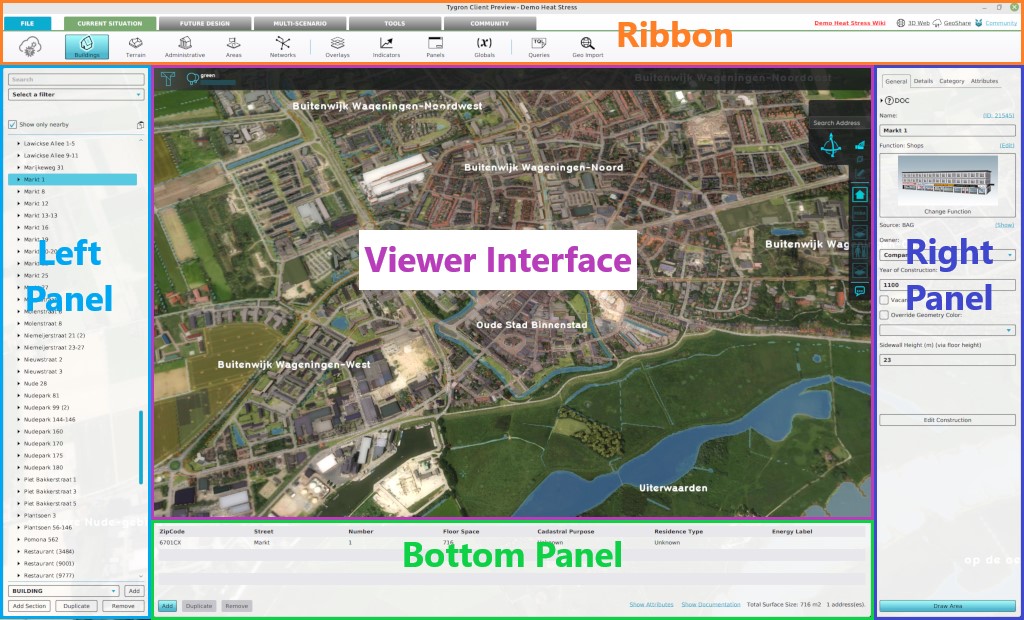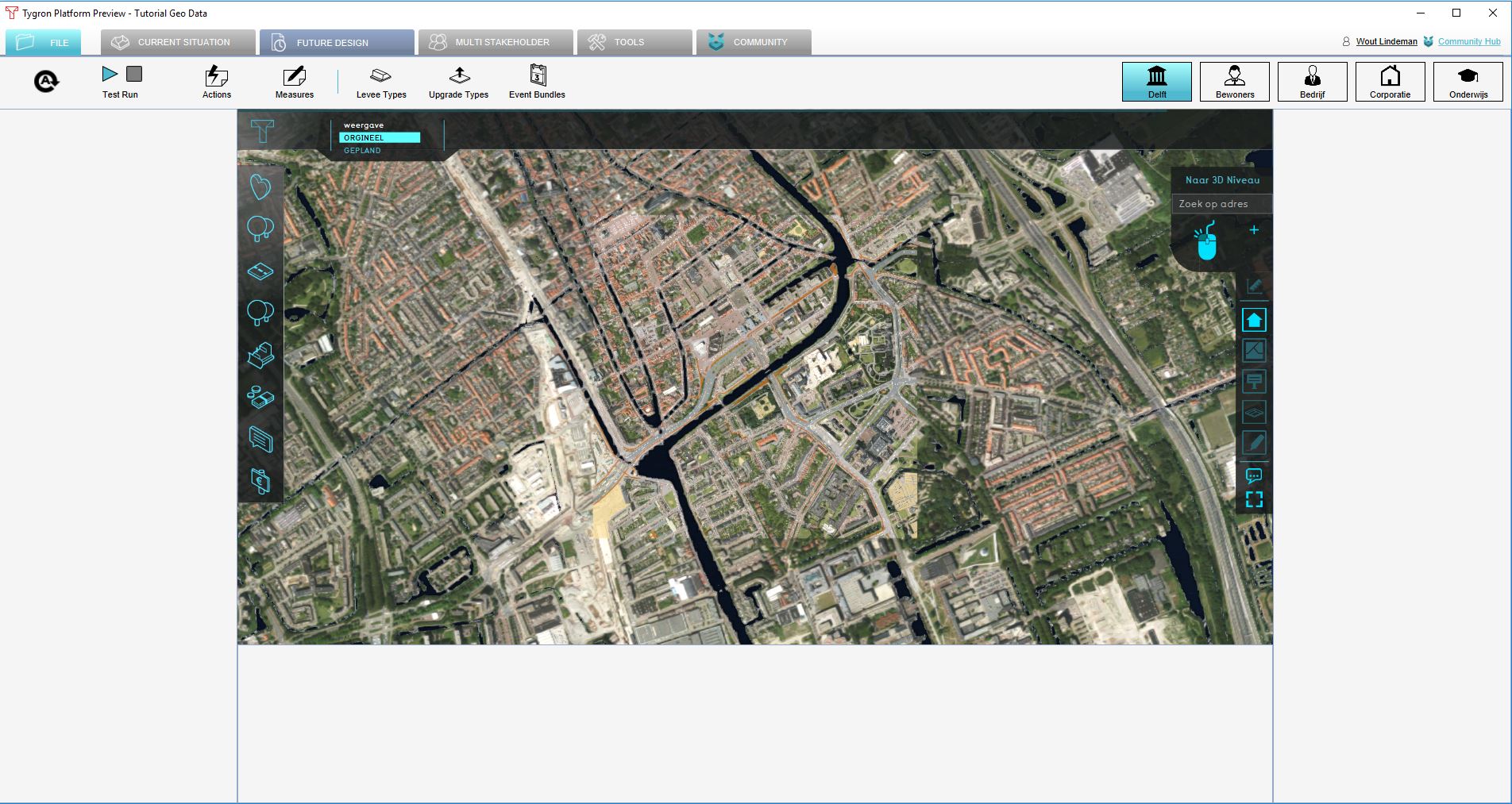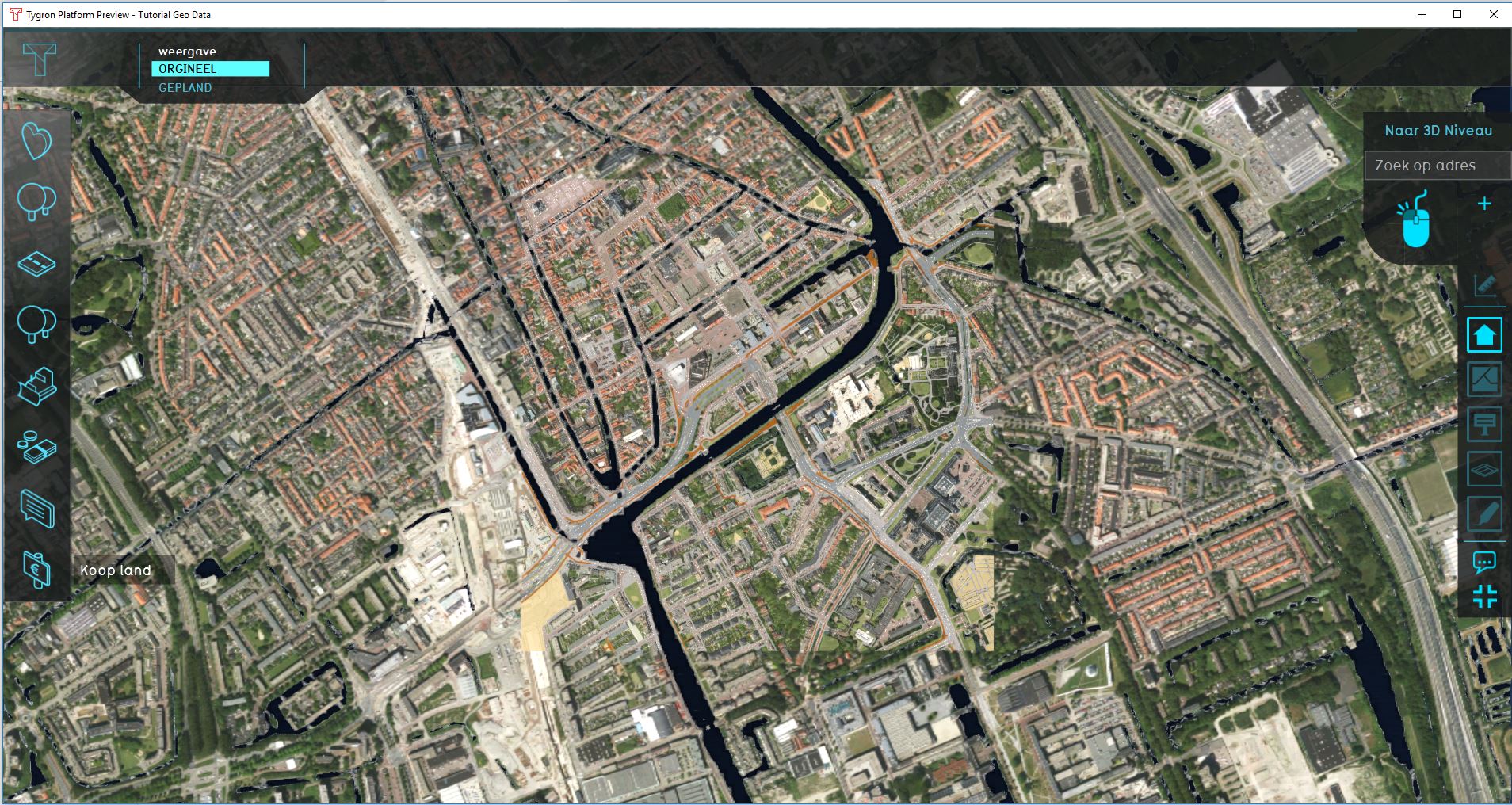Editor
Editor
The editor is the system with which you are able to create your own projects in the Tygron Platform. By using the Editor to create your own project rather than using a pre-made or default project, you are able to model the project more closely to the real-world situation faced by you and your stakeholders. Although the term has a generic meaning, in context of the Tygron Platform the term Editor always refers to the Tygron Platform's built-in editing functionality.
How does the editor relate to the Tygron Platform
The Editor allows you to improve and edit your own project in the Tygron Platform. The Tygron Platform stores projects as datastructures, which the editor presents in an understandable and editable manner. Many components of a project can be freely edited using the editor.
Editor layout
The editor is composed of several sections: the Ribbon, the left panel, the Virtual 3D World, the right panel, and the bottom panel. Each editor panel has its own distinct functionality.
Default layout / Maximized layout
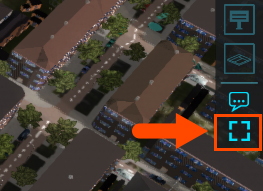
The maximize view port button on the bottom right side of the user interface changes the editor layout, to minimize or maximize the main user interface, .
Default editor layout
The default editor layout, with access to all available panels.
Maximized user interface layout
The editor with a maximized user interface panel. This view hides the left panel, the right panel and the bottom panel of the Tygron Editor interface.
Ribbon
- Main article: Ribbon.
The ribbon is the generic header of the Tygron Editor. It is a tabbed header, which provides access to tools grouped by categories. Those categories are in organized in tabs. This makes tools accessible in a logical way.
Left panel
- Main article: Left Panel.
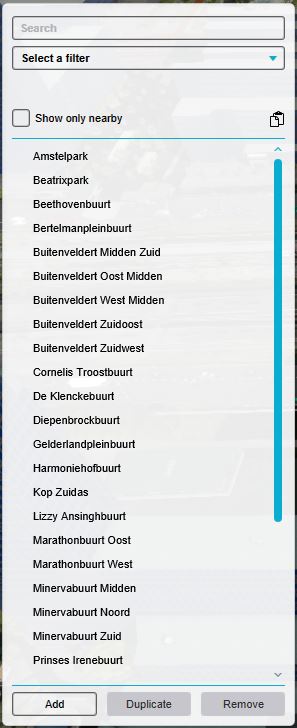
The left panel, on the left side of the screen, provides access to sub-items and functionality of the item currently selected on the ribbon bar. For example, if the Indicators button is currently selected on the ribbon bar, access to the current active indicators in the project is available.
User Interface
- Main article: User Interface.
The largest panel is the User Interface. This panel displays the current state of your project. All elements that are present in a regular project are present in this panel. The user interface consists of prominently available, interactive interface elements, as well as a number of contextually available information panels. The interface elements can be considered to be part of either of two groups: the main interface elements or the additional interface elements. The main interface elements are either always available or vital for interacting with the project session. The additional interface elements provide additional information, and are only available in certain contexts or when taking specific actions.
Right panel
- Main article: Right Panel.
The right panel, on the right side of the screen, provides access to properties currently selected in the left panel. The "Finance Municipality" item is currently selected in the left panel. Its properties can be changed from within the right panel.
Bottom panel
- Main article: Bottom Panel
The bottom panel is used for detailed editing, and changing parameters for using the brush inside the 3D World. It is context-sensitive and used for example for changing indicator targets, pairing upgrades and changing environment settings.
Editing with multiple users
Just like the process in which a project is created, a project can be edited by multiple users at the same time. The number of users that can work simultaneously on the same project is equal to the number of playable stakeholders in the project. Only one instance of the project can be edited at the same time. If a user is already editing a project, you can decide to join their editing session. A project which is being edited cannot be opened again for editing, or opened for a session, until all users have closed their editing sessions of the project.
Starting the editor
To start the editor log in to the Tygron Platform. From the main menu, you can either choose to create a new project, edit an existing project, or join an editing session.
Creating a new project:
Editing an existing Project:
Joining an existing editing session:
When creating a new project, you will first be presented with a wizard to set up the basis of your project.
When you have completed the wizard, selected to edit an existing project or chosen to join an existing editing session, you will be presented with the primary editing interface, and the starting screens for the project.
